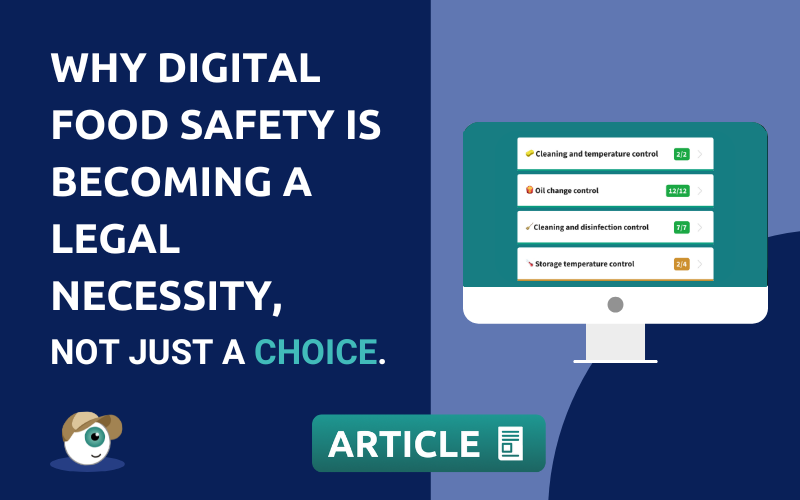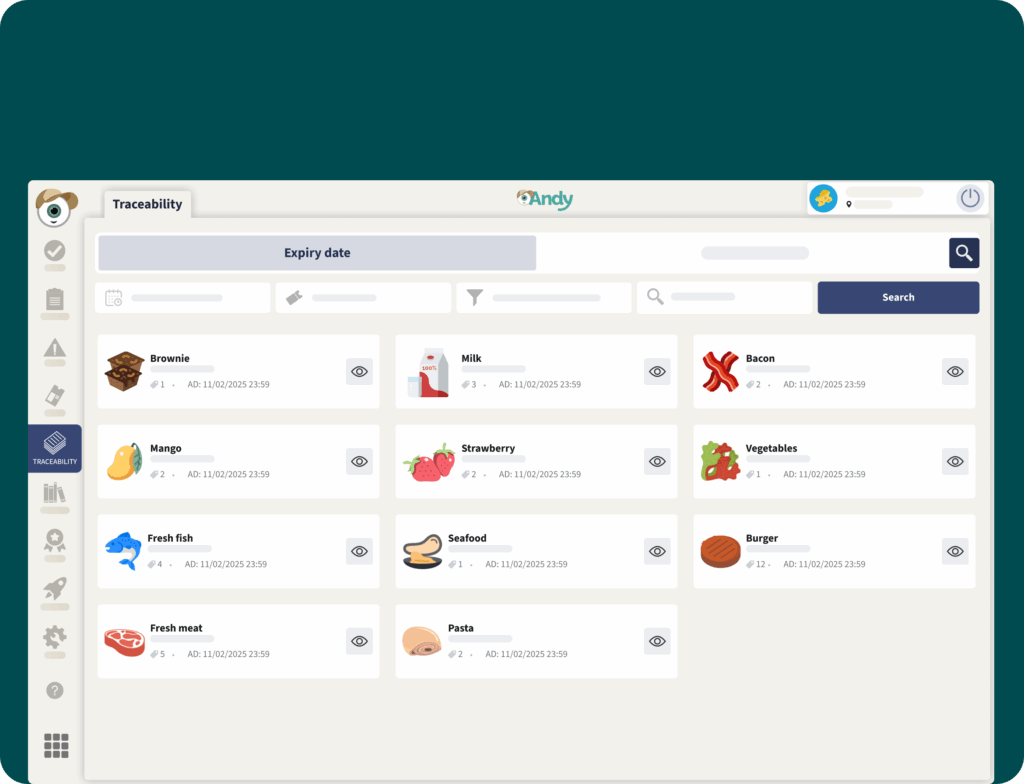Why Digital Food Safety Is Becoming a Legal Necessity, Not Just a Choice

Food safety compliance is no longer a matter of ticking boxes – it’s about proving, in real time, that your processes are under control.
Across the world, governments are modernising regulations to demand digital traceability, faster reporting, and data transparency across the supply chain.
For hotels, restaurants, and food retailers, this means the old comfort of binders and manual checklists is quickly disappearing. In 2025, digital food safety isn’t a competitive advantage – it’s becoming the minimum standard.
The Global Regulatory Push Toward Digital Records
Across continents, authorities are shifting from static audits to continuous, data-based assurance.
The message is clear: if your food safety system can’t show live or recent data, you may soon fall short of compliance.
United States – FSMA 204 Traceability Rule:
The U.S. Food and Drug Administration’s Final Rule on Additional Traceability Records for Certain Foods now requires that all businesses handling high-risk foods (like leafy greens, soft cheeses, seafood, etc.) record “Key Data Elements” and link them to specific “Critical Tracking Events.” These records must be provided digitally to the FDA within 24 hours.
👉 Read more on FDA.gov
European Union – Toward Smart Traceability:
The EU’s long-standing General Food Law Regulation (EC) No 178/2002 already demands full traceability across every step of the food chain. But in 2025, new EU initiatives are reinforcing digital oversight — including blockchain pilots and “digital product passports” for agri-food goods as part of the European Green Deal and Farm-to-Fork Strategy.
👉 EU General Food Law overview
👉 Joint Research Centre update on digital food integrity
Latin America – Traceability and Transparency on the Rise:
Countries like Brazil, Chile, and Mexico are advancing traceability and digital reporting systems inspired by Codex Alimentarius and FSMA principles. Chile’s National Food Safety and Quality System (SNCA) and Brazil’s Sistema Brasileiro de Inspeção de Produtos de Origem Animal (SISBI-POA) are incorporating electronic certification and data-driven inspections.
👉 Regional overview by Trace One
Globally, the World Health Organization and FAO are also encouraging digitalisation as a foundation for safer trade and cross-border cooperation.
👉 WHO report on digitalisation, food safety and trade
For international operators – hotel groups, franchise networks, and retail chains – these developments signal a turning point: digital record-keeping is no longer a “nice to have,” but a precondition for regulatory and brand compliance.
From Paper Logs to Smart Digital Food Safety
What happens when food safety becomes digital?
Inspections become faster, data becomes defensible, and compliance becomes measurable.
- Instant audits: Authorities or third-party certifiers can review logs, photos, and temperature records remotely.
- Tamper-proof history: Digital food safety systems timestamp every task, creating transparent and verifiable trails.
- Real-time alerts: When something goes wrong – a fridge temperature, a missed cleaning check – the system notifies managers before it escalates.
It’s a shift from “prove what you did last week” to “show me what’s happening now.”

Why Digital Food Safety Equals Safer Food Safety
Going digital doesn’t just satisfy regulators – it actively prevents incidents.
- Faster responses: Real-time data helps teams act before a breach becomes an outbreak.
- Trend detection: Analytics reveal recurring issues, like equipment underperformance or unsafe patterns.
- Supply chain visibility: Digital traceability allows operators to isolate and recall products instantly.
Research supports this: digital analytics can dramatically improve early detection of hazards and streamline responses in complex supply chains.
👉 ScienceDirect: Data Analytics in Food Safety
What Foodservice & Retail Teams Can Do Now
Here’s a practical roadmap to stay ahead:
- Audit your data gaps. Identify where your safety records still rely on paper.
- Start small, scale smart. Begin digitising the highest-risk areas – temperature checks, supplier logs, cleaning records.
- Integrate upstream. Request digital documentation from suppliers and distributors.
- Train your team. Make digital record-keeping second nature.
- Review your readiness. Can you produce verifiable safety data within 24 hours? If not, start preparing now.
The shift to digital food safety is happening – not gradually, but rapidly. Governments, regulators, and consumers are aligning around the same expectation: transparency powered by technology.
For foodservice, hospitality, and retail operators, this isn’t about future-proofing – it’s about present-proofing.
Digital food safety is no longer optional.
It’s the standard that defines trust, compliance, and operational excellence in 2025 and beyond.



